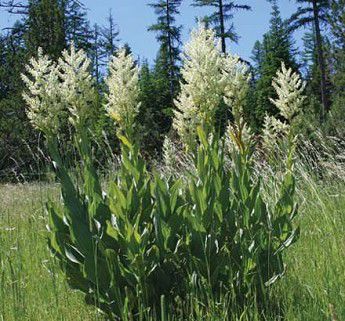Finding the more common False Hellebore
Published 9:22 am Thursday, July 9, 2009

- Veratrum californicum
Name: California False Hellebore
Scientific name: Veratrum californicum
Three years ago I wrote about the Green False Hellebore, which is hard to find and blooms in August and September. The California False Hellebore usually starts blooming the middle of June, and is very common. This year it is blooming a little late, and is just now in full bloom throughout the Blue Mountains from middle to upper elevations. It can easily be identified by anyone driving at any speed from 200 yards away. The plant is common throughout the western United States to the Rockies, and down into Mexico.
Veratrum californicum has a single erect stem about 5 to 7 feet tall. At the top is a panicle with tassel-like branches covered with white flowers the size of a nickel. The branches of white flowers point upward, which distinguishes it from the Green False Hellebore that has branches of green flowers that are drooping. The leaves of both plants are nearly identical, being about as wide as your hand and twice as long.
The name Veratrum means “true black,” which probably refers to the black roots. The name False Hellebore comes from a very similar but unrelated plant in Europe known as Hellebore, which is well-known there as a poison and potent herb. Having a name associated with a poisonous plant is appropriate, as both False Hellebore plants are extremely poisonous. All parts of the plant are very poisonous to people and animals. People have been poisoned from just drinking water that the plant has been growing in. Anyone ingesting even a small amount of any part of the plant should seek immediate attention. Other plants of this genus have been powdered to make an insecticide.
American Indian tribes were aware of the plants being toxic, but have carefully used it to treat advanced stages of serious illness and injuries. They also used salmon oil for an antidote for the poison.
Where to find: Drive anywhere above 3,000 feet in the Blue Mountains and you’ll see lots of it. It prefers moist open areas. This year the plant is putting on an unusual show.









